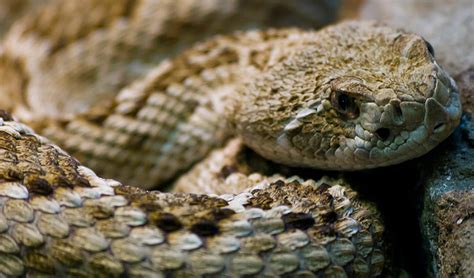In the harsh, unforgiving desert landscape, where water is scarce and survival is a constant struggle, nature never ceases to amaze with its ingenious adaptations. Among the inhabitants of these arid regions are prairie rattlesnakes, masters of adaptation and resilience. These serpents have evolved a remarkable strategy to harness life-giving water from rare rainfall events.
Imagine yourself stranded in the blistering heat of the desert, your throat parched and your body weakened by dehydration. Suddenly, dark clouds gather overhead, offering a glimmer of hope in the form of raindrops. But how would you seize this precious opportunity without hands to collect the vital liquid? For prairie rattlesnakes, this dilemma has been ingeniously resolved through a behavior that defies conventional wisdom.
Renowned herpetologist and ecologist Scott Boback from Dickinson College in Pennsylvania sheds light on this extraordinary phenomenon. He explains that while rainwater collection is observed in various snake species, detailed scientific study on this behavior was previously limited to mere anecdotes due to the elusive nature of these reptiles and the rarity of rainfall in arid habitats.
To unravel the mysteries behind rattlesnakes’ rain-harvesting tactics, Dr. Boback and his research team embarked on an innovative experiment at a well-known rattlesnake hibernaculum near Steamboat Springs, Colo. Using artificial rainfall generated by garden sprinklers and sophisticated video recording equipment, they closely monitored nearly 100 snakes as they responded to simulated downpours.
Through their meticulous observations, the researchers uncovered a fascinating sequence of behaviors displayed by these thirsty reptiles. Not only did they observe snakes eagerly lapping up moisture from their own flattened bodies and the dampened ground but also engaging in an unexpected communal act – drinking off each other’s skin! The sight of rattlesnakes delicately sipping water from their neighbors’ scales paints a vivid picture of cooperation amidst harsh conditions.
Interestingly, Dr. Boback’s team made another intriguing discovery during their study: snakes within larger groups demonstrated a higher tendency to engage in mutual hydration compared to those in smaller clusters. This finding hints at social dynamics among rattlesnakes that extend beyond mere survival instincts into potential cooperative strategies for enduring arid environments collectively.
As we delve into this captivating narrative of rain-collecting rattlesnakes braving the challenges of desert life with remarkable resourcefulness and adaptability, we gain valuable insights into nature’s endless reservoirs of creativity and resilience. The tale of these serpentine survivors serves as a poignant reminder of the boundless wonders that unfold when creatures face adversity head-on with ingenuity born out of necessity.

